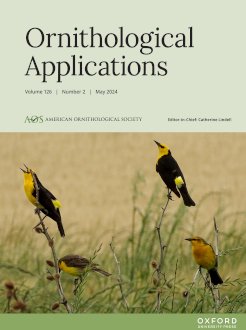The Bonelli's Eagle (Aquila fasciata) is a critically endangered species in Israel, with electrocution on power lines posing a serious threat to its population. Because retrofitting of electricity pylons to prevent mortality is a slow and costly process, it is important to prioritize the pylons in the network for quick and efficient mitigation of eagle mortality. To determine which pylons need to be retrofitted, we applied a three-stage maximum entropy modeling process for identifying the risk factors posed by different environmental variables. The environmental feature with the highest correlation to electrocution is the distance to reservoirs (i.e., many electrocution events occur near water reservoirs). The reservoirs are foraging hotspots for Bonelli's Eagles in Israel's arid environment. Electricity pylons powering the reservoirs' pumping facilities tend to be the highest perches in the vicinity of many of the reservoirs, creating an ecological trap. The strong attraction of reservoirs to eagles may explain the high level of selectivity indicated by the model, suggesting that retrofitting only 3.6% of the pylons in the network would achieve 77% reduction in eagles' electrocution probability. Moreover, insulating pylons according to the model will also likely reduce electrocutions of other avian species, including Eastern Imperial Eagle (Aquila heliaca) and White-tailed Eagle (Haliaeetus albicilla). The modeling process presented here yielded 2 electrocution risk maps, one to facilitate prioritization of mitigation in Israel's existing power network and the second to support planning and designing new infrastructure. The model may help reach conservation goals for the Israeli Bonelli's Eagle and the modeling approach may also be useful in prioritizing pylon retrofitting in other arid landscapes.
LAY SUMMARY
Raptor electrocution on power lines is a major mortality cause, negatively affecting many of their populations worldwide. In order to halt this problem, it is necessary to correct the electricity pylons by changing their structure or insulate their energized parts.
In this study, we used a geographic model to prioritize the insulation of pylons in the Israeli electricity grid in order to enable the recovery of the locally endangered Bonelli's Eagle and bring remedy for other eagle species that share the same habitats.
The results show that the eagles are especially prone to get electrocuted near water reservoirs that are favored by them for foraging, but where electricity pylons are the only tall perch available, because all the trees were removed when the reservoirs were initially constructed.
The model suggests that retrofitting only 4% of the pylons in the network would achieve ∼80% reduction in eagles' electrocution, aiding their conservation.
Aquila fasciata es una especie en peligro crítico de extinción en Israel, representando la electrocución en líneas eléctricas una seria amenaza para su población. Debido a que la renovación de postes eléctricos para prevenir la mortalidad es un proceso lento y costoso, es importante priorizar los postes en la red para mitigar de forma rápida y eficiente la mortalidad de las águilas. Para determinar qué postes deben ser adaptados, aplicamos un proceso de modelado de Máxima Entropía de tres etapas para identificar los factores de riesgo planteados por diferentes variables ambientales. La característica ambiental con la correlación más alta con la electrocución es la distancia a los embalses (i.e., muchos eventos de electrocución ocurren cerca de los embalses de agua). Los embalses son puntos de alimentación clave para A. fasciata en el entorno árido de Israel. Los postes eléctricos que alimentan las instalaciones de bombeo de los embalses tienden a ser los lugares más altos en las cercanías de muchos embalses, creando una trampa ecológica. La fuerte atracción de los embalses para las águilas puede explicar el alto nivel de selectividad indicado por el modelo, sugiriendo que adaptar solo el 3.6% de los postes en la red lograría una reducción del 77% en la probabilidad de electrocución de las águilas. Además, el aislamiento de los postes según el modelo también probablemente reducirá las electrocuciones de otras especies de aves, incluyendo a A. heliaca y Haliaeetus albicilla. El proceso de modelado presentado aquí produjo dos mapas de riesgo de electrocución, uno para facilitar la priorización de la mitigación en la red eléctrica existente de Israel y el segundo para respaldar la planificación y diseño de nueva infraestructura. El modelo puede ayudar a alcanzar los objetivos de conservación para A. fasciata y también puede ser útil para priorizar la adaptación de postes en otros paisajes áridos.






